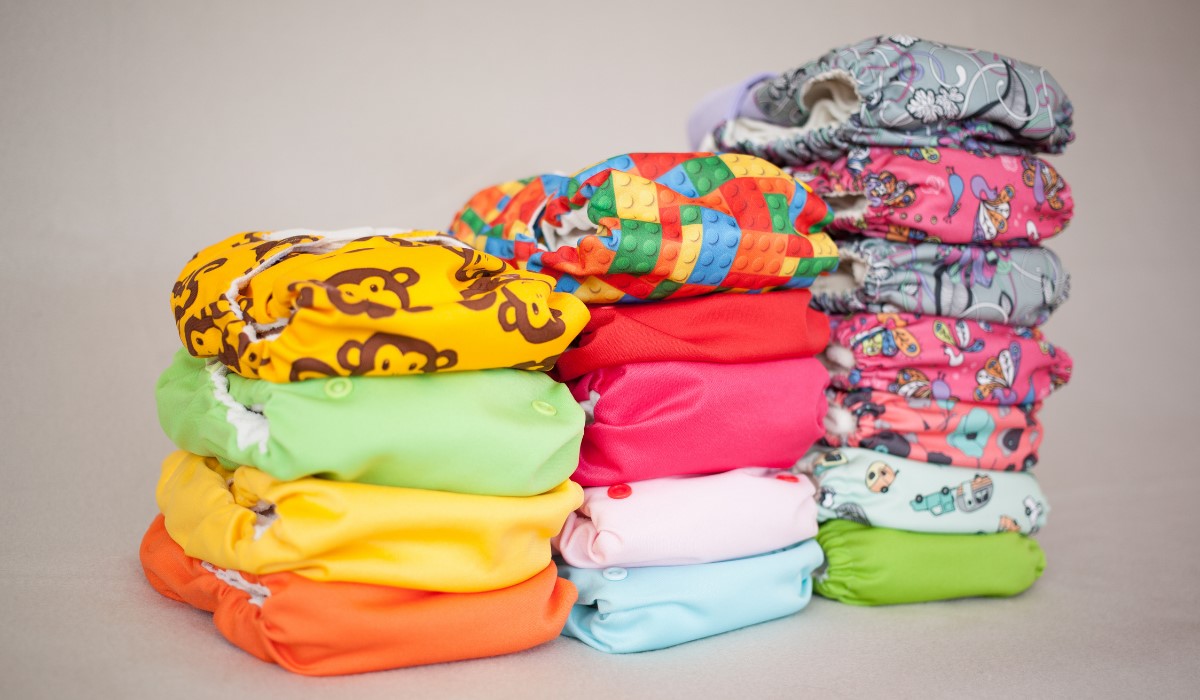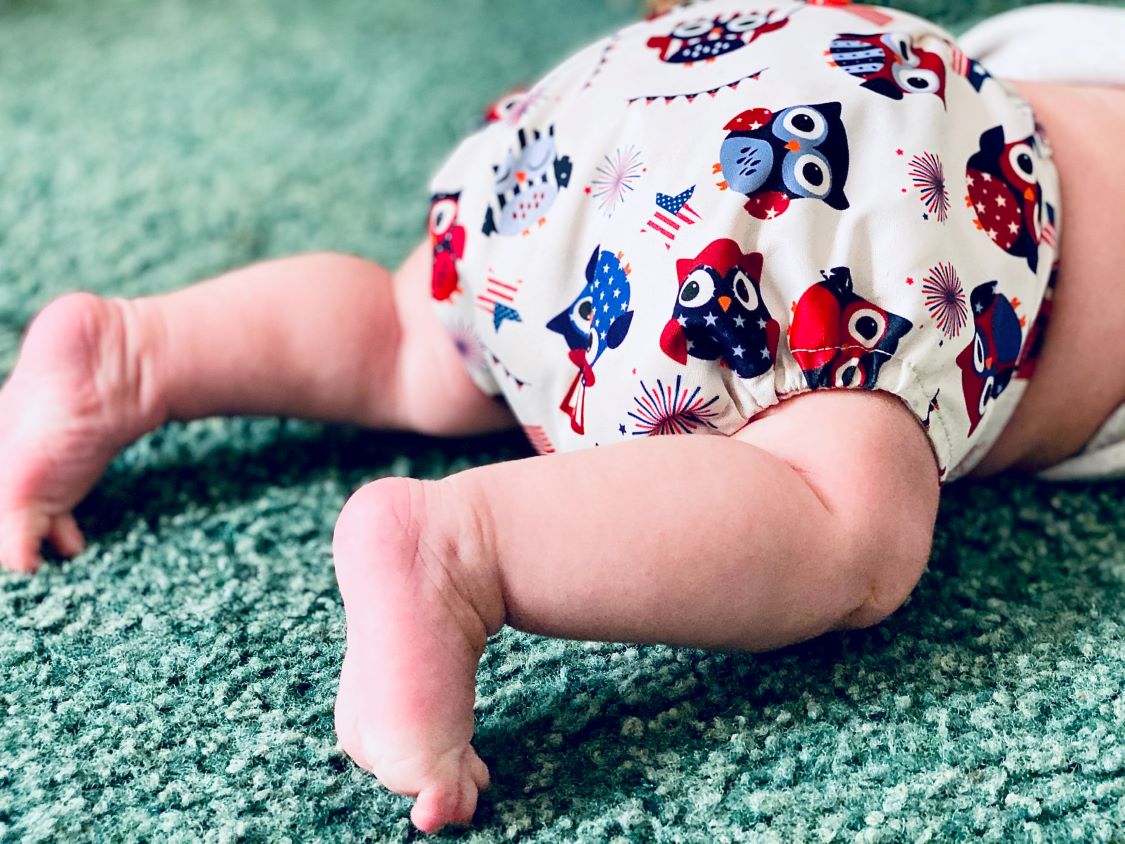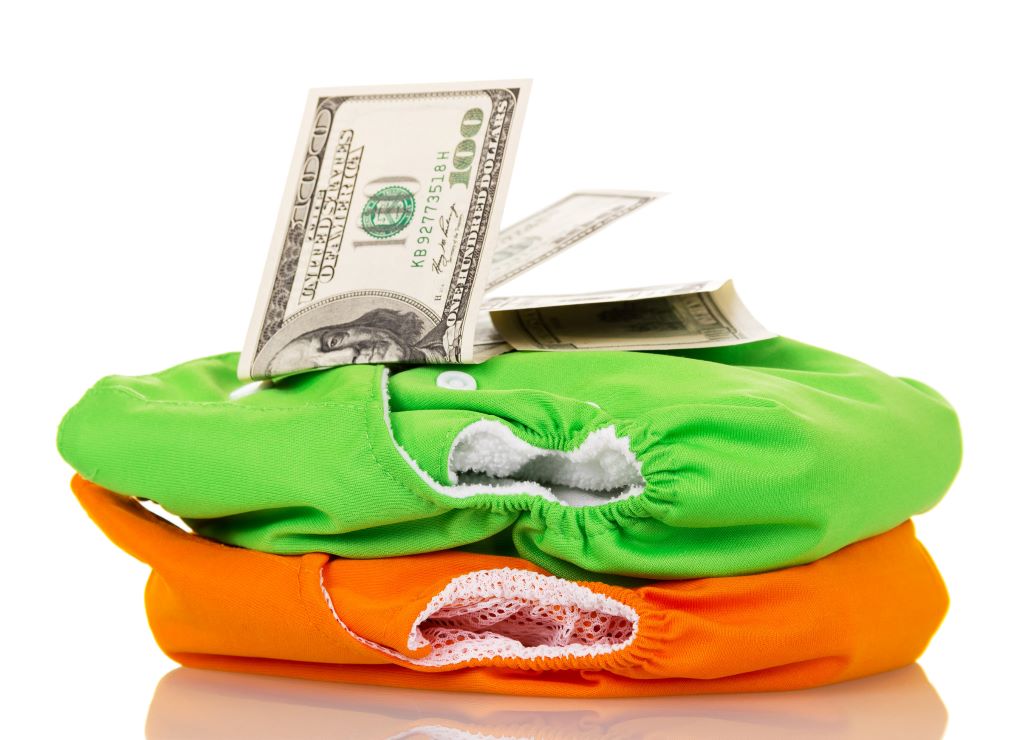Most people see cloth diapering and either see it as an incredibly helpful, life-changing thing or as an added difficulty in the already complicated job that is caring for a baby. The truth is, cloth diapering is neither of those things.
Before you commit to cloth diapering, there are a few things you need to know. Cloth diapers are more effective financially, but they may be too time-consuming to keep up, especially for working parents. They are better for the environment in the sense that they have fewer chemicals and synthetic, non-biodegradable material, but the additional washing may rack up your utility bills.
There are many misconceptions surrounding cloth diapers. It would be wrong to say that cloth diapering makes parenting easier, but it wouldn’t be right to call it a total inconvenience either. Here are some of the pros and cons of cloth diapers that you may want to consider.
Pros and Cons of Using Cloth Diapers

Pros of Using Cloth Diapers
-
Lower Cost in the Long Run
A baby goes through an average of 2,000 diapers in their first year alone. While a single diaper only costs about $0.30, those costs add up quickly and can end up costing parents around $2,100 or 7,000 diapers by the time their child is fully potty trained.
On the other hand, it costs around $800 to $1000 to keep your child in cloth diapers until they are fully potty trained. This accounts for accessories you’ll need such as wet bags and diaper sprayers, and additional costs for diaper-only laundry cycles and baby-safe detergent.
If taken care of properly, a single set of one-size cloth diapers can last a child through all their diapering years and can be passed on to future siblings. If they are still in fairly good condition, can be resold to people looking to buy cloth diapers at a lower price.
-
Less Environmental Impact
Solid waste from diapers should be disposed of in the toilet separate from the diaper itself. More often than not though, disposable diaper users often throw them into the same trash as the diaper itself is, potentially spreading communicable diseases and creating health risks for anyone who comes in contact with it later.
Disposable diapers are also one of the largest single consumer items found in landfills and make up 50% of waste in a household with a child using disposables. Research estimates that a baby makes 1 ton of trash in a year when using disposable diapers.
Disposable diapers take around 500 years to decompose in landfills and an “eco-friendly” disposable takes around 50. The manufacturing process disposable diapers go through uses around 9 gallons of water a diaper and often also leach harmful chemicals into the environment.
-
Potentially Healthier for Baby

Although most babies will be able to use disposable diapers with no problems or long-term effects, some may have negative reactions to certain chemicals found in disposable diapers.
Dyes and fragrances found in many major diaper brands have been known to cause contact dermatitis and diaper rash in babies. The compound super absorbent polymer (SAP), which is the main absorbent agent found in diapers, has been linked to toxic shock syndrome in feminine hygiene products containing SAP.
Because the materials found in cloth diapers (cotton, hemp, bamboo, microfiber) are hypoallergenic, babies do not usually develop allergic reactions while using them. While some babies may still develop reactions to cloth diapers, using a baby-safe detergent and taking care to thoroughly clean your cloth diapers will help prevent any negative reactions from cloth diapers.
-
May Encourage Earlier Potty Training
The absorbent filling in disposable diapers prevents your baby from feeling any wetness when they go to the bathroom. Many parents find that using disposable diapers lengthens the potty training process because children aren’t able to recognize wetness unless the diaper is full to the point of leaking.
With cloth diapers, they are more likely to feel the moisture in their diaper after they go. Wanting to avoid the feeling of wetness in a diaper against their skin may be enough incentive to get your child to start using the toilet.
Cons of Using Cloth Diapers
-
Higher Initial Cost

Because of all the accessories that cloth diapers require, they have a significantly higher upfront cost. A set of 36 one-size cloth diapers and liners costs around $180 compared to around $40 for a box of 200 disposables. The huge disparity in immediate cost is understandably a turn-off for some people.
The positive side to this is because cloth diapers are reusable and modern adjustable size diapers grow with your baby, you’ll only have to worry about buying them once. As long as you have running water and electricity to wash your diapers, you’ll never run out.
-
Less Absorbent Compared to Disposables
Cloth diapers do not contain the same super absorbent polymer filling that disposable diapers have. Cloth diapers hold less liquid and may need to be changed slightly more often, and some people chose to “double-stuff” or place 2 absorbent liners in each diaper to avoid leaks.
The good news is that modern cloth diapers and cloth diaper liners come in different fabrics and absorbency levels. The 4 most commonly available fabrics are hemp, bamboo cotton, cotton, and microfiber.
-
Higher Maintenance and Cleaning
Possibly the biggest turn-off in using cloth diapers is the cleaning required. Diapers that have only been peed in are more straightforward and don’t require any special pre-cleaning, but solid waste needs to be rinsed off before washing.
If your baby is completely breastfed, their poop is water-soluble, meaning you can get away with not doing any pre-wash removal (although you can if you want to). If your baby is formula-fed or has started eating solids, you will need to dump and rinse the poop off before you can toss it in the wash.
There are items you can use that make rinsing poop diapers easier. Some people prefer to use a diaper sprayer (spray nozzle that attaches to the toilet’s water line like a bidet) and diaper spray shield (open-bottomed cylindrical tool that keeps dirty water from splashing) when rinsing diapers, but it is also okay to simply swish the diaper around in the toilet bowl.
You can also use disposable diaper liners which keep solids from coming in contact with the diaper itself but allow liquid to pass through. Just lay the liner on top of the diaper and flush the liner along with the poop in the toilet.
Before this discourages you from using cloth diapers, know that fecal matter needs to be separated from disposable diapers disposed of through sewer systems as well. Disposable or not, you would still have to deal with your baby’s poop.
-
Learning Curve
With disposable diapers, there’s pretty much only 1 method to putting them on, taking them off, and throwing them out no matter what brand or what size they are.
Modern cloth diapers come with snaps that fasten the same way as the adhesives in disposable diapers do. They may even be more convenient as they are unlikely to break or rip during changes.
Cloth diapers do come in different styles though, all-in-ones and all-in-twos being the most common and generally most convenient. Different styles work well for different people, so you may need to do some experimentation before you find out what works best for you.
It may take a few weeks to get into the routine of cleaning and washing cloth diapers, but many people say that the bit of extra time it takes to take care of the diapers is very much made up by the money saved by cloth diapering.
-
Inconvenient While Travelling
Traveling with a baby in cloth diapers may not be the most convenient option, especially if you are going several days without access to a washing machine or at least a sprayer. Carrying around a wet bag or Ziploc of dirty diapers isn’t a very appealing idea for most people.
Some daycare centers might not allow the use of cloth diapers. If you plan to put your cloth-diapered infant in daycare, you will have to either find a daycare that accommodates cloth diapers or switch to using disposables.
In Conclusion
Now that you’ve seen some of the pros and cons of using cloth diapers, you can decide if using cloth is right for you. Cloth diapers are great for a multitude of reasons, and for many people, cloth diapers work perfectly well for their babies and work much better than disposables.
If you find that cloth diapers just aren’t working out for you, using disposables is okay too. Some people may also find that using a mix of cloth and disposables works better for them. You’ll still be able to get the benefits of using cloth diapers from part-time use.
It’s also worth noting that most of the time, there isn’t a huge difference in using cloth and disposables in terms of how healthy or comfortable it is for your baby, although some babies may prefer the feel of cloth over disposables. There may also be some cases where a pediatrician may recommend using one over the other, so it’s worth clearing any concerns you may have with your baby’s doctor.